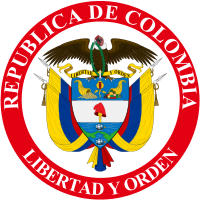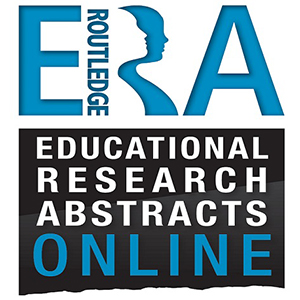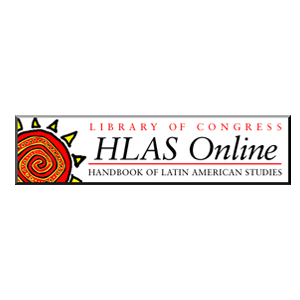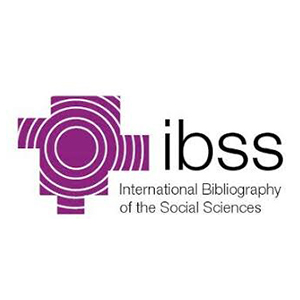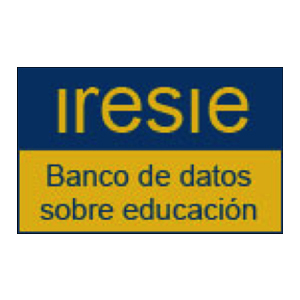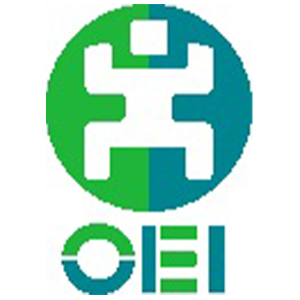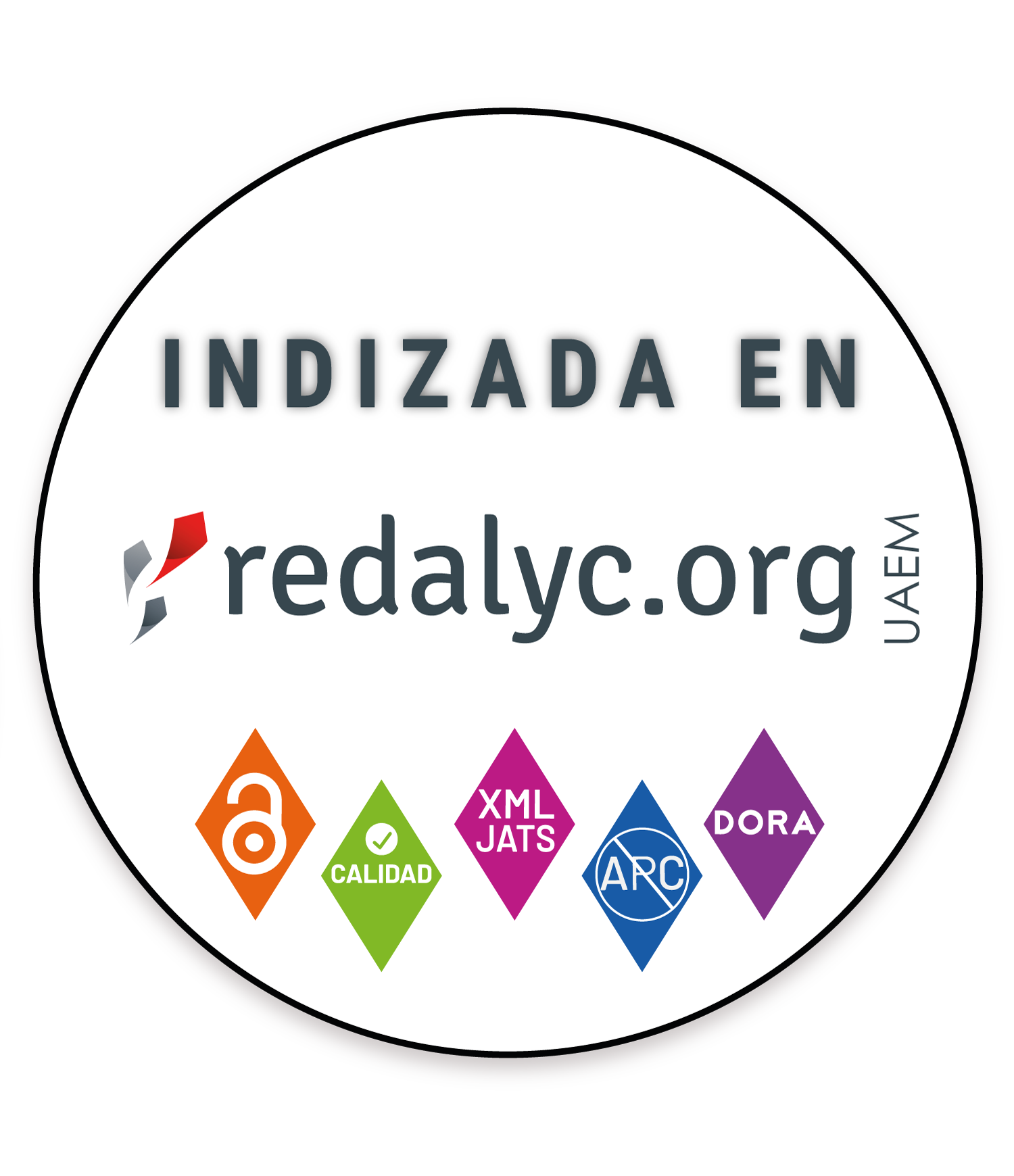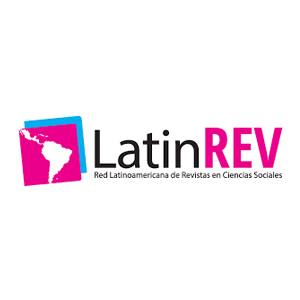Videojuegos y educación: análisis de tendencias en investigación
Videogames and Education: Analysing of Research Trends
Videogames e educação: análise das tendências de pesquisa
Mucho se ha escrito en los últimos tiempos acerca de las posibilidades y controversias del uso de los videojuegos en educación. Para conocer las tendencias en investigación, a través de la productividad, impacto, colaboración y difusión, se realizó un análisis bibliométrico sobre 226 documentos disponibles en la base de datos Scopus. Además, se complementó con un análisis de contenido de los 62 artículos disponibles en acceso abierto. Los resultados muestran el interés por el estudio de esta cuestión y el auge en la última década, el peso de países como España, y el elevado impacto de casi la mitad de los artículos. Además, se confirma lo esperado según la Ley de Lotka y Bradford. Las investigaciones confirman que los videojuegos tienen efectos positivos en el aprendizaje, la motivación y la dinámica de la clase, sin olvidar el papel fundamental del profesorado, el diseño y la finalidad del propio juego. Por último, se señalan futuras líneas de investigación vinculadas a la necesaria formación del profesorado o la evaluación de los videojuegos desde una vertiente pedagógica.
juego educativo, investigación , enseñanza, tecnología, desarrollo de la educación (es)
jogo educacional, pesquisa, ensino, tecnología, desenvolvimento educacional (pt)
Abramovich, S., Schunn, C. y Higashi, R. M. (2013). Are badges useful in education? It depends upon the type of badge and expertise of learner. Educational Technology Research and Development, 61(2), 217-232. 10.1007/s11423-013-9289-2 DOI: https://doi.org/10.1007/s11423-013-9289-2
Aleixandre, R. (2010). Bibliometría e indicadores de producción científica. En J. Jiménez, J. M. Argimon, A. Martín y T. Vilardell (eds.), Publicación científica biomédica: cómo escribir y publicar un artículo de investigación (pp. 363-384). Editorial Elsevier. DOI: https://doi.org/10.1016/B978-84-8086-461-9.50027-8
Almeida, F. y Buzády, Z. (2019). Learning entrepreneurship in higher education throug hflow theory and FLIGBY Game. International Journal of Virtual and Personal Learning Environments, 9(1), 1-15. 10.4018/IJVPLE.2019010101 DOI: https://doi.org/10.4018/IJVPLE.2019010101
Altman, D. (1991). Practical statistics for medical research. CRC Press. DOI: https://doi.org/10.1201/9780429258589
Alyaz, Y. y Genc, Z. S. (2016). Digital game-based language learning in foreign language teacher education. Turkish Online Journal of Distance Education, 17(4), 130-146. 10.17718/tojde.44375 DOI: https://doi.org/10.17718/tojde.44375
Arnab, S., Brown, K., Clarke, S., Dunwell, I., Lim, T., Suttie, N., Louchart, S., Hendrix, M. y De Freitas, S. (2013). The development approach of a pedagogically-driven serious game to support Relationship and Sex Education (RSE) within a classroom setting. Computers & Education, 69, 15-30. 10.1016/j.compedu.2013.06.013ç DOI: https://doi.org/10.1016/j.compedu.2013.06.013
Arnab, S., Lim, T., Carvalho, M. B., Bellotti, F., De Freitas, S., Louchart, S., Suttie, N., Berta, R. y De Gloria, A. (2015). Mapping learning and game mechanics for serious games analysis. British Journal of Educational Technology, 46(2), 391-411. 10.1111/bjet.12113 DOI: https://doi.org/10.1111/bjet.12113
Bauman, Z. (2003). Modernidad líquida. Fondo de Cultura Económica.
Bellotti, F., Berta, R. y De Gloria, A. (2010). Designing effective serious games: opportunities and challenges for research. International Journal of Emerging Technologies in Learning, 5(2), 22-35. 10.3991/ijet.v5s3.1500 DOI: https://doi.org/10.3991/ijet.v5s3.1500
Borji, Y. E. y Khaldi, M. (2014). Comparative study to develop a tool for the quality assessment of serious games intended to be used in education. International Journal of Emerging Technologies in Learning, 9, 50-55. 10.3991/ijet.v9i9.4150 DOI: https://doi.org/10.3991/ijet.v9i9.4150
Bosschaart, A., Van der Schee, J. y Kuiper, W. (2016). Designing a flood-risk education program in the Netherlands. The Journal of Environmental Education, 47(4), 271-286. 10.1080/00958964.2015.1130013 DOI: https://doi.org/10.1080/00958964.2015.1130013
Calabor, M. S., Mora, A. y Moya, S. (2019). The future of 'serious games' in accounting education: A Delphi study. Journal of Accounting Education, 46, 43-52. 10.1016/j.jaccedu.2018.12.004 DOI: https://doi.org/10.1016/j.jaccedu.2018.12.004
Carvalho, M. B., Bellotti, F., Berta, R., De Gloria, A., Sedano, C. I., Hauge, J. B., Hu, J. y Rauterberg, M. (2015). An activity theory-based model for serious games analysis and conceptual design. Computers and Education, 87, 166-181. 10.1016/j.compedu.2015.03.023 DOI: https://doi.org/10.1016/j.compedu.2015.03.023
Castells, M. (1997). La era de la información. Economía, sociedad y cultura. Vol. 1. Alianza Editorial.
Castro, Á. P., Raposo-Rivas, M. y Martínez-Figueira, M. (2018). ¿Mejorar la atención con videojuegos? Un estudio de caso. REOP. Revista Española de Orientación y Psicopedagogía, 29(3), 94-109. 10.5944/reop.vol.29.num.3.2018.23323 DOI: https://doi.org/10.5944/reop.vol.29.num.3.2018.23323
Cejudo, J. y Latorre, S. (2015). Effects of the Spock videogame on improving emotional intelligence in adolescents. Electronic Journal of Research in Educational Psychology, 13(2), 319-342. 10.14204/ejrep.36.15060 DOI: https://doi.org/10.14204/ejrep.36.15060
Cela-Ranilla, J. M., Esteve-Mon, F. M., Esteve-González, V. y Gisbert-Cervera, M. (2014). Developing self-management and teamwork using digital games in 3D simulations. Australasian Journal of Educational Technology, 30(6), 634-651. 10.14742/ajet.754 DOI: https://doi.org/10.14742/ajet.754
Cobo, C. y Moravec, J. W. (2011). Aprendizaje invisible. Hacia una nueva ecología de la educación. Publicacions i Edicions de la Universitat de Barcelona.
Chamarro, A., Oberst, U., Cladellas, R., y Fuster, H. (2020). Effect of the frustration of psychological needs on addictive behaviors in mobile videogamers—The mediating role of use expectancies and time spent gaming. International Journal of Environmental Research and Public Health, 17(17), 1-16. 10.3390/ijerph17176429 DOI: https://doi.org/10.3390/ijerph17176429
De Moll, F. (2019). Die alltagsgestaltung von kindern als determinante des schulerfolgs: Wie hängen lesekulturelle und mediale praktiken mit dem erfolg in der grundschule zusammen? Zeitschrift Fur Soziologie Der Erziehung Und Sozialisation, 39(3), 265-280.
De Sousa, F. y Rasmussen, I. (2019). Productive disciplinary engagement and videogames. Nordic Journal of Digital Literacy, 14, 99-116. 10.18261/issn.1891-943x-2019-03-04-02 DOI: https://doi.org/10.18261/issn.1891-943x-2019-03-04-02
Di Tore, P. A. (2014). Perception of space, empathy and cognitive processes: Design of a video game for the measurement of perspective taking skills. International Journal of Emerging Technologies in Learning, 9, 23-29. 10.3991/ijet.v9i7.3718 DOI: https://doi.org/10.3991/ijet.v9i7.3718
Dunbar, N. E., Jensen, M. L., Miller, C. H., Bessarabova, E., Lee, Y., Wilson, S. N., Elizondo, J., Adame, B. J., Valacich, J., Straub, S., Burgoon, J., Lane, B., Piercy, C., Wilson, D., King, S., Vincent, C. y Schuetzler, R. M. (2017). Mitigation of cognitive bias with a serious game: Two experiments testing feedback timing and source. International Journal of Game-Based Learning, 7(4), 86-100. 10.4018/IJGBL.2017100105 DOI: https://doi.org/10.4018/IJGBL.2017100105
Erhel, S. y Jamet, E. (2013). Digital game-based learning: Impact of instructions and feedback on motivation and learning effectiveness. Computers and Education, 67, 156-167. 10.1016/j.compedu.2013.02.019 DOI: https://doi.org/10.1016/j.compedu.2013.02.019
Esqueda, M. D. y Fernandes, I. C. (2019). A tradução de jogos para smartphones na sala de aula de ensino de tradução] DELTA Documentacao De Estudos Em Linguistica Teorica e Aplicada, 35(4), 1-33. 10.1590/1678-460X2019350406 DOI: https://doi.org/10.1590/1678-460x2019350406
Ferguson, C., Van den Broek, E. L. y van Oostendorp, H. (2020). On the role of interaction mode and story structure in virtual reality serious games. Computers & Education, 143, 1-10. 10.1016/j.compedu.2019.103671 DOI: https://doi.org/10.1016/j.compedu.2019.103671
Ferreira, A. (2014). Jeux sérieux et langue de spécialité: Trois exemples de ludification pour l'apprentissage de l'anglais naval. Recherche et Pratiques Pedagogiques en Langues de Specialite - Cahiers De l'APLIUT, 33(1), 66-90. 10.4000/apliut.4176 DOI: https://doi.org/10.4000/apliut.4176
Finco, M. D. y Fraga, A. B. (2012). Rompendo fronteiras na Educação Física através dos videogames com interação corporal. Motriz. Revista De Educacao Fisica, 18(3), 533-541. 10.1590/S1980-65742012000300014 DOI: https://doi.org/10.1590/S1980-65742012000300014
Finco, M. D., Reategui, E. B. y Zaro, M. A. (2015). Laboratório de exergames: Um espaço complementar para as aulas de educação física. Movimento, 21(3), 687-699. DOI: https://doi.org/10.22456/1982-8918.52435
Fokides, E., Atsikpasi, P., Kaimara, P. y Deliyannis, I. (2019). Factors influencing the subjective learning effectiveness of serious games. Journal of Information Technology Education, 18, 437-466. 10.28945/4441 DOI: https://doi.org/10.28945/4441
Gabriel, S. (2018). How to analyze the potential of digital games for human rights education. Revista Lusófona de Educação, 41, 29-43. 10.24140/issn.1645-7250.rle41.02 DOI: https://doi.org/10.24140/issn.1645-7250.rle41.02
Galindo, H. (2019). Los videojuegos en el desarrollo multidisciplinar del currículo de educación primaria: el caso Minecraft. Pixel-Bit, 55, 57-73. 10.12795/pixelbit.2019.i55.04 DOI: https://doi.org/10.12795/pixelbit.2019.i55.04
Galván-Pérez, L., Ouariachi, T., Pozo-Llorente, M. y Gutiérrez-Pérez, J. (2018). Outstanding videogames on water: A quality assessment review based on evidence of narrative, gameplay and educational criteria. Water, 10(10), 1-30. 10.3390/w10101404 DOI: https://doi.org/10.3390/w10101404
García, I., Gallardo-López, J. A. y López-Noguero, F. (2020). La inteligencia emocional y la educación emocional en la escuela: un estado de la cuestión a través del análisis bibliométrico de la producción científica en Scopus (2015-2019). En J. A. Marín, G. Gómez, M. Ramos y M. N. Campos (coords.), Inclusión, tecnología y sociedad (pp. 220-231). Dyckinson S. L.
González-Valero, G., Ubago-Jiménez, J. L., Zurita-Ortega, F., Chacón-Cuberos, R., Castro-Sánchez, M. y Puertas-Molero, P. (2018). Eating habits and lifestyles in schoolchildren from Granada (Spain). A pilot study. Education Sciences, 8(4), 1-10. 10.3390/educsci8040216. DOI: https://doi.org/10.3390/educsci8040216
Gonzalo-Iglesia, J. L., Lozano-Monterrubio, N. y Prades-Tena, J. (2018). Noneducational board games in university education: Perceptions of students experiencing Game-Based Learning methodologies. Revista Lusófona de Educação 41(41), 45-62. 10.24140/issn.1645-7250.rle41.03 DOI: https://doi.org/10.24140/issn.1645-7250.rle41.03
Guillén-Nieto, V. y Aleson-Carbonell, M. (2012). Serious games and learning effectiveness: The case of it's a deal! Computers and Education, 58(1), 435-448. 10.1016/j.compedu.2011.07.015 DOI: https://doi.org/10.1016/j.compedu.2011.07.015
Hanes, L. y Stone, R. (2019). A model of heritage content to support the design and analysis of video games for history education. Journal of Computers in Education, 6(4), 587-612. 10.1007/s40692-018-0120-2 DOI: https://doi.org/10.1007/s40692-018-0120-2
Hannig, A., Kuth, N., Özman, M., Jonas, S. y Spreckelsen, C. (2012). eMedOffice: A web-based collaborative serious game for teaching optimal design of a medical practice. BMC Medical Education, 12(1), 1-15. 10.1186/1472-6920-12-104 DOI: https://doi.org/10.1186/1472-6920-12-104
Hansbøl, M. y Meyer, B. (2011). Shifting ontologies of a serious game and its relationships with English education for beginners. E-learning and Digital Media, 8(3), 228-246. 10.2304/elea.2011.8.3.228 DOI: https://doi.org/10.2304/elea.2011.8.3.228
Hummel, H. G., Joosten-ten Brinke, D., Nadolski, R. J. y Baartman, L. K. (2017). Content validity of game-based assessment: Case study of a serious game for ICT managers in training. Technology, Pedagogy and Education, 26(2), 225-240. 10.1080/1475939X.2016.1192060 DOI: https://doi.org/10.1080/1475939X.2016.1192060
Katsaounidou, A., Vrysis, L., Kotsakis, R., Dimoulas, C. y Veglis, A. (2019). MAthE the game: A serious game for education and training in news verification. Education Sciences, 9(2), 1-15. 10.3390/educsci9020155. DOI: https://doi.org/10.3390/educsci9020155
Khaled, R., y Vasalou, A. (2014). Bridging serious games and participatory design. International Journal of Child-Computer Interaction, 2(2), 93-100. 10.1016/j.ijcci.2014.03.001 DOI: https://doi.org/10.1016/j.ijcci.2014.03.001
King, J. (1987). A review of bibliometric and other science indicators and their role in research evaluation. Journal of Information Science, 13(5), 261-276. 10.1177/016555158701300501 DOI: https://doi.org/10.1177/016555158701300501
Kirby, A. (2009). Digimodernism: How new technologies dismantle the postmodern and reconfigure our culture. Bloomsbury Publishing USA.
Kokkalia, G., Drigas, A., Economou, A., Roussos, P. y Choli, S. (2017). The use of serious games in preschool education. iJET, 12(11), 15-27. 10.3991/ijet.v12.i11.6991 DOI: https://doi.org/10.3991/ijet.v12i11.6991
Kron, F. W., Gjerde, C. L., Sen, A. y Fetters, M. D. (2010). Medical student attitudes toward video games and related new media technologies in medical education. BMC medical Education, 10(1), 1-11. 10.1186/1472-6920-10-50 DOI: https://doi.org/10.1186/1472-6920-10-50
Lanzotti, A., Vanacore, A., Tarallo, A., Nathan-Roberts, D., Coccorese, D., Minopoli, V., Carbone, F., d’Angelo, R., Grasso, C., Di Gironimo, G. y Papa, S. (2020). Interactive tools for safety 4.0: Virtual ergonomics and serious games in real working contexts. Ergonomics, 63(3), 324-333. 10.1080/00140139.2019.1683603 DOI: https://doi.org/10.1080/00140139.2019.1683603
López, I., Avello, R., Avello, Baute, L. M., y Vidal, M. (2018). Videogames in higher education. Revista Cubana de Educación Médica Superior, 32(1), 264-276.
Marín-Díaz, V., Morales-Díaz, M. y Reche-Urbano, E. (2019). Educational possibilities of video games in the primary education stage according to teachers in training. A case study. Journal of New Approaches in Educational Research, 8(1), 42-49. 10.7821/naer.2019.1.330 DOI: https://doi.org/10.7821/naer.2019.1.330
Marín-Díaz, V., Sampedro-Requena, B. E. y Mac Fadden, I. (2019). Perceived utility of video games in the learning process in secondary education—Case studies. Sustainability, 11(23), 1-13. 10.3390/su11236744 DOI: https://doi.org/10.3390/su11236744
Martínez-Heredia, N. y Moreno, M. B. (2020). Impacto de la producción científica acerca de la educación para muerte: revisión bibliométrica en Scopus y Web of Science. RIE, 82(2), 65-79. 10.35362/rie8223553 DOI: https://doi.org/10.35362/rie8223553
Mayer, I., Bekebrede, G., Harteveld, C., Warmelink, H., Zhou, Q., Van Ruijven, T. y Wenzler, I. (2014). The research and evaluation of serious games: Toward a comprehensive methodology. British Journal of Educational Technology, 45(3), 502-527. 10.1111/bjet.12067 DOI: https://doi.org/10.1111/bjet.12067
McGregor, G. y Bartle, E. (2019). The creation and trial of a serious game to support teaching and learning of professional psychology competencies in postgraduate programs. Australasian Journal of Educational Technology, 35(5), 15-28. 10.14742/ajet.4237 DOI: https://doi.org/10.14742/ajet.4237
Moreno, A. J. (2019). Estudio bibliométrico de la producción científica sobre la inspección educativa. REICE, 17(3), 23-40. 10.15366/reice2019.17.3.002 DOI: https://doi.org/10.15366/reice2019.17.3.002
Moreno, J. y Álvarez, J. A. (2020). Videojuego móvil como estrategia didáctica para facilitar la adaptación a la vida universitaria. Formación Universitaria, 13(1), 55-62. 10.4067/S0718-50062020000100055 DOI: https://doi.org/10.4067/S0718-50062020000100055
Papanastasiou, G., Drigas, A. y Skianis, C. (2017). Serious games in preschool and primary education: benefits and impacts on curriculum course syllabus. International Journal of Emerging Technologies in Learning, 12(01), 44-56. 10.3991/ijet.v12i01.6065 DOI: https://doi.org/10.3991/ijet.v12i01.6065
Peery, J. G. y Pasalar, C. (2018). Designing the learning experiences in serious games: the overt and the subtle—the virtual clinic learning environment. Informatics. Multidisciplinary Digital Publishing Institute, 5(3), 1-14. 10.3390/informatics5030030 DOI: https://doi.org/10.3390/informatics5030030
Peña Miguel, N., Corral Lage, J. y Mata Galindez, A. (2020). Assessment of the development of professional skills in university students: Sustainability and serious games. Sustainability, 12(3), 1-18. 10.3390/su12031014 DOI: https://doi.org/10.3390/su12031014
Perianes-Rodriguez, A., Waltman, L. y Van Eck, N. J. (2016). Constructing bibliometric networks: A comparison between full and fractional counting. Journal of Informetrics, 10(4), 1178-1195. DOI: https://doi.org/10.1016/j.joi.2016.10.006
Prinsloo, J. W. y Jordaan, D. B. (2014). Selecting serious games for the computer science class. Mediterranean Journal of Social Sciences, 5(21), 391-391. 10.5901/mjss.2014.v5n21p391 DOI: https://doi.org/10.5901/mjss.2014.v5n21p391
Ricoy, C. (2016). Preferencias, dedicación y problemáticas generadas por los videojuegos: Una perspectiva de género. Revista Complutense de Educación, 27(3), 1291-1308. doi.org/10.5209/rev_RCED.2016.v27.n3.48445 DOI: https://doi.org/10.5209/rev_RCED.2016.v27.n3.48445
Romaní, C. C. y Moravec, J. W. (2011). Aprendizaje invisible: hacia una nueva ecología de la educación (Vol. 3). Edicions Universitat Barcelona.
Rovithis, E., Floros, A., Moustakas, N., Vogklis, K. y Kotsira, L. (2019). Bridging audio and augmented reality towards a new generation of serious audio-only games. Electronic Journal of e-Learning, 17(2), 144-156. 10.34190/JEL.17.2.07 DOI: https://doi.org/10.34190/JEL.17.2.07
Saldanha, L., Pinto, M. y Ferreira, P. D. (2018). Unmanned: Dimension politique et civique du jeu vidéo. Revista Lusofona De Educacao, 40(40), 181-197. 10.24140/ISSN.1645-7250.RLE40.12 DOI: https://doi.org/10.24140/issn.1645-7250.rle40.12
San Martín, A. (1995). La escuela de las tecnologías. Universitat de València.
Saravanan, M. y Balasaravanan, T. (2018). Videogame playing and aggression behaviour: A correlation study among school students. Media Watch, 9(2), 209-218. 10.15655/mw/2018/v9i2/49383 DOI: https://doi.org/10.15655/mw/2018/v9i2/49383
Schwarz, A., Mertens, L., Simons, M., Spook, J. E., Thompson, D., Cardon, G., De Bourdeaudhuij, I., Chastin, S. y DeSmet, A. (2019). Which game narratives do adolescents of different gameplay and sociodemographic backgrounds prefer? A mixed-methods analysis. Games for Health Journal, 8(3), 195-204. 10.1089/g4h.2017.0178 DOI: https://doi.org/10.1089/g4h.2017.0178
Sedeño, A. (2010). Videojuegos como dispositivos culturales: las competencias espaciales en educación. Comunicar, 17(34), 183-189. 10.3916/C34-2010-03-018 DOI: https://doi.org/10.3916/C34-2010-03-18
Shi, W., Kaneko, K., Ma, C. y Okada, Y. (2019). A framework for automatically generating quiz-type serious games based on linked data. International Journal of Information and Education Technology, 9(4), 250-256. 10.18178/ijiet.2019.9.4.1208 DOI: https://doi.org/10.18178/ijiet.2019.9.4.1208
Sipiyaruk, K., Gallagher, J. E., Hatzipanagos, S. y Reynolds, P. A. (2017). Acquiring critical thinking and decision-making skills: An evaluation of a serious game used by undergraduate dental students in dental public health. Technology, Knowledge and Learning, 22(2), 209-218. 10.1007/s10758-016-9296-6 DOI: https://doi.org/10.1007/s10758-016-9296-6
Smallenbroek, B., De Vries, R., y Lindhout, A. (2015). ‘Op eigen kracht’: innovatieve serious game als geaccrediteerde nascholing over zelfredzaamheid voor huisartsen ook geschikt voor bedrijfsartsen. TBV–Tijdschrift voor Bedrijfs-en Verzekeringsgeneeskunde, 23(2), 67-70. 10.1007/s12498-015-0030-4 DOI: https://doi.org/10.1007/s12498-015-0030-4
Strawhacker, A., Bers, M., Verish, C., Sullivan, A. y Shaer, O. (2018). Enhancing children's interest and knowledge in bioengineering through an interactive videogame. Journal of Information Technology Education: Innovations in Practice, 17(1), 55-81. 10.28945/3976 DOI: https://doi.org/10.28945/3976
Su, C. H. (2018). Exploring sustainability environment educational design and learning effect evaluation through migration theory: An example of environment educational serious games. Sustainability, 10(10), 1-26. 10.3390/su10103363 DOI: https://doi.org/10.3390/su10103363
Tomás-Górriz, V. y Tomás-Casterá, V. (2018). La bibliometría en la evaluación de la actividad científica. Hospital a Domicilio, 2(4), 145-163. 10.22585/hospdomic.v2i4.51 DOI: https://doi.org/10.22585/hospdomic.v2i4.51
Torres-Toukoumidis, A., Romero-Rodriguez, L., Amor, M. y Bjork, S. (2016). Development of reading skills through video games: state of the art. OCNOS, 15(2), 37-49. 10.18239/ocnos_2016.15.2.1124 DOI: https://doi.org/10.18239/ocnos_2016.15.2.1124
Torres-Toukoumidis, A., Salgado, J. P., Peñalva, S. y Carrera, P. (2020). Global Game Jam in Latin-America, a collaborative videogame learning experience. Social Sciences, 9(3), 28, 1-11. 10.3390/socsci9030028 DOI: https://doi.org/10.3390/socsci9030028
Van Eck, N. J. y Waltman, L. (2011). Text mining and visualization using VOSviewer. arXiv preprint arXiv:1109.2058
Yassine, A., Chenouni, D., Berrada, M. y Tahiri, A. (2017). A serious game for learning c programming language concepts using solo taxonomy. iJET, 12(03), 110-127. 10.3991/ijet.v12i03.6476 DOI: https://doi.org/10.3991/ijet.v12i03.6476
Zulueta, M. A. y Bordons, M. (1999). A global approach to the study of teams in multidisciplinary research areas through bibliometric indicators. Research Evaluation, 8(2), 111-118. 10.3152/147154499781777612 DOI: https://doi.org/10.3152/147154499781777612
APA
ACM
ACS
ABNT
Chicago
Harvard
IEEE
MLA
Turabian
Vancouver
Descargar cita
Citaciones

1. Magnolia Muñoz, Michael Fernando Villamizar, Héctor Fabian Palacios. (2024). Influencia de los Juegos Tecnológicos en los Procesos de Enseñanza y Aprendizaje: Una Revisión de Literatura. Saber Ser - Revista de Estudios Cualitativos en Educación, 1(1), p.47. https://doi.org/10.35997/saberser.v1i1.8.
2. Juan David Galeano-Marín. (2022). Videojuegos en la plataforma Erudito: una alternativa para ejecutar los planes de mejoramiento. Bio-grafía, 15(29), p.128. https://doi.org/10.17227/bio-grafia.vol.15.num29-17706.
3. Rosario Mireya Romero Parra, Luis Andres Barboza Arenas, Jorge Luis Romero Chacín, José Antonio Faria Romero. (2023). Implementación de guía teórico-práctica para la realización de proyectos de investigación como objeto de aprendizaje para entornos virtuales. Telos Revista de Estudios Interdisciplinarios en Ciencias Sociales, 25(1), p.6. https://doi.org/10.36390/telos251.02.
Métricas PlumX
Visitas
Descargas
Recibido: 24 de julio de 2020; Aceptado: 27 de diciembre de 2020
Resumen
Mucho se ha escrito en los últimos tiempos acerca de las posibilidades y controversias del uso de los videojuegos en educación. Para conocer las tendencias en investigación, a través de la productividad, impacto, colaboración y difusión, se realizó un análisis bibliométrico sobre 226 documentos disponibles en la base de datos Scopus. Además, se complementó con un análisis de contenido de los 62 artículos disponibles en acceso abierto. Los resultados muestran el interés por el estudio de esta cuestión y el auge en la última década, el peso de países como España, y el elevado impacto de casi la mitad de los artículos. Además, se confirma lo esperado según la Ley de Lotka y Bradford. Las investigaciones confirman que los videojuegos tienen efectos positivos en el aprendizaje, la motivación y la dinámica de la clase, sin olvidar el papel fundamental del profesorado, el diseño y la finalidad del propio juego. Por último, se señalan futuras líneas de investigación vinculadas a la necesaria formación del profesorado o la evaluación de los videojuegos desde una vertiente pedagógica.
Abstract
Much has been recently written about the possibilities and controversies of using video games in education. In order to know the research trends, through productivity, impact, collaboration and dissemination, a bibliometric analysis was performed on 226 documents available in the Scopus database. This was supplemented with a content analysis of 62 open-access articles. The results show the interest of studying this question and the boom of the past decade, the weight of countries like Spain, and the strong impact of almost half the articles. The expectations set by Lotka's and Bradford's laws were confirmed. Research confirms that video games have positive effects on learning, motivation and class dynamics, without forgetting the fundamental role of teachers, and the design and purpose of games. Finally, future research lines related to necessary teacher training or the evaluation of video games from a pedagogical perspective are indicated.
Keywords:
educational game, research, teaching, technology, educational development.Resumo
Muito tem sido escrito nos últimos tempos sobre as possibilidades e controvérsias do uso de videogames na educação. Para conhecer as tendências da pesquisa, por meio da produtividade, impacto, colaboração e disseminação, foi realizada uma análise bibliométrica em 226 documentos disponíveis no banco de dados Scopus. Além disso, foi complementada por uma análise de conteúdo dos 62 artigos disponíveis em acesso aberto. Os resultados mostram o interesse no estudo dessa questão e o boom da última década, o peso de países como a Espanha e o alto impacto de quase metade dos artigos. Além disso, o que é esperado é confirmado de acordo com a Lei de Lotka e Bradford. Pesquisas confirmam que os videogames têm efeitos positivos na dinâmica de aprendizado, motivação e classe, sem esquecer o papel fundamental dos professores, o design e o objetivo do jogo. Por fim, são apontadas futuras linhas de pesquisa relacionadas à necessária formação de professores ou à avaliação de videogames sob uma perspectiva pedagógica.
Palavras chave:
jogo educacional, pesquisa, ensino, tecnología, desenvolvimento educacional.Introducción
Hoy podemos afirmar que los videojuegos constituyen una expresión de la cultura digital interactiva. Transitando la segunda década del siglo XXI podemos definir a la cultura lúdica como un componente de gran parte de las rutinas y desempeños de los sujetos. Ahora bien, ¿cómo podemos definir este cambio de época definida como cultura lúdica? Advertimos que estamos transitando desde la cultura Gutenberg que impuso un uso generalizado de la escritura hacia la cultura lúdica-digital.
Nos sostenemos en esta advertencia: los usos y prácticas van generando huellas psicosociales en nuestras acciones: el uso generalizado selló prácticas en la modernidad. Así como necesitamos poner orden a la oralidad y establecer coordenadas espacio-temporales que posibiliten la escritura, estas prácticas sobre el papel también se van imprimiendo en la organización social: una sociedad jerarquizada y ordenada que fue acompañando estas huellas. Este concepto estructural produce un residuo cognitivo (San Martín, 1995, p. 158) que es muy interesante porque se refiere a una mente que dialoga con la cultura. En la modernidad teníamos como objetivo una sociedad jerarquizada, ordenada, segmentada. La escritura pasó por el mismo tránsito cultural. Desde la oralidad hasta la escritura. Cuando se ordena ese mundo del rumor y se fija una orientación, se jerarquiza incluso el valor de la escritura. Siguiendo este pensamiento vemos que, promediando la primera década del siglo XXI, hallamos un verdadero cambio de época más allá de una época de cambios. El nuevo paradigma cultural denominado digimodernismo (Kirby, 2009) implica diversos medios y nuevas ideas sobre la creación de textos y su funcionamiento, produce formas distintivas de categorizar y explicar el nuevo mundo digital y nuestro lugar en él. Ahí inscribimos la cultura lúdica. Prácticas cotidianas, signadas por la expansión de los videojuegos en entornos casuales, móviles y que pueden ser ejecutados en tiempos estrechos y ágiles. La institución escolar también participa de esta cultura rechazando prácticas docilizantes y memorísticas, propias de otros tiempos didácticos. Los estudiantes demandan materiales didácticos que no solo sean soportes de contenidos, sino que, además sean ágiles y divertidos. Se ha abierto un nuevo nicho para el desarrollo de videojuegos fáciles de acompañar los temas curriculares más arduos.
El proceso de digitalización produce un cambio en dos componentes constitutivos de la identidad social: el espacio y el tiempo. La escritura demanda un espacio estático de exhibición, de serenidad y de contemplación de ese objeto que es la palabra, el conocimiento, el libro. La contemplación es muchas veces lo que pide el maestro, el silencio. Aquí surge un obstáculo para incluir videojuegos en las aulas que el profesor debe sortear, valorando la ganancia de jugar, de reír y de caer inmersos en una narrativa que facilita el progreso en la resolución de problemas. El profesorado que incluye videojuegos en las aulas valora el desarrollo de competencias y habilidades que se producen en los equipos de juego que se divierten al aprender. La alegría es otro componente que instalan los juegos en el aula. En tiempos posmodernos los relatos lineales, el orden secuencial, está en crisis porque estos nuevos textos demandan o se construyen en base a la interactividad. Un texto si no es interactivo, no es dinámico y si no permite hacer otros trazados cansa, agota, pierde el interés.
El usuario es un prosumidor que busca intervenir: es interactividad cultural. El espacio, hoy, es inmersivo, y entró en el espacio de la lectura y en la construcción de sentido. Un espacio participativo, de múltiples ventanas. Las neurociencias han hallado en la educación un nuevo objeto de estudio: nuestras neuronas que eran secuenciales ahora tienen múltiples posibilidades de conectarse y aparecen otro tipo de conexiones. La sociedad tenía un tiempo lineal con rutinas que nos estructuraban la vida, un tiempo de la intimidad, un tiempo laboral y un tiempo para resolver cuestiones de cotidianidad. Tiempos separados, vinculados a los ámbitos cotidianos. Hoy se ha producido un remix temporal que ha mezclado el tiempo laboral con el tiempo cotidiano, desde que apareció esta posibilidad de estar conectados sincrónicamente, se mezclan los tiempos y los espacios, se puede estar comunicado con gente que habita espacios lejanos y se desconoce al vecino. La estructura del pueblo se ha convertido, como bien expresa Castells (1997), "en una serie de chalecitos individuales" (p. 374). Aparece una nueva categoría de sujeto vinculado a las nuevas prácticas culturales.
Si entendemos que los sujetos escolares son sujetos inmersos en la cultura y no son sujetos biológicos aislados, vamos a poder reinventar la didáctica de estos estudiantes que hoy cuestionan a una enseñanza que aún no contempla estas características de la cultura lúdica que atrapa a los estudiantes. Este sujeto del siglo XXI ya no es un sujeto que está en un lugar, en un tiempo y en un espacio. Es un sujeto que se mueve, es un sujeto que volvió a ser nómade, traslada su oficina en su móvil y está teletrabajando o cursando una carrera en su hogar. Cobo y Moravec (2011) lo definen como sujetos knowmads (know: "conocimiento"; mads: "nómade"), el conocimiento nómade. Esta metáfora describe un conocimiento situado: la institución escolar, la biblioteca, la universidad, el libro de texto, hacia un sujeto/objeto nómade que se va construyendo y reconstruyendo permanentemente. Moravec escribe con Romaní Cristóbal Cobo el texto Aprendizaje invisible (2011), y definen el sujeto como un sujeto nómade y una knowmad society, una sociedad nómade donde las fronteras son cada vez más indefinidas. Los aportes de Bauman (2003), con su descripción de modernidad líquida, nos permiten describir a la institución/escuela como lo sólido en esta modernidad líquida. Convivir con esa incertidumbre es un proceso complejo y más aún situándolo en educación, ya que nuestra tarea es siempre en perspectiva. Estos conceptos son muy interesantes para comprender los cambios que requiere el nuevo paradigma de enseñanza ya que sitúa las buenas prácticas en categorías culturales.
En estas conceptualizaciones socioculturales hallamos las bases para definir qué concepto de videojuego educativo adherimos. Consideramos un videojuego educativo como un material didáctico digital (MDD), ya que tiene como finalidad reforzar contenidos diseñados explícitamente para atender a los contenidos a enseñar. Considerando otra didáctica, la tradicional, se presentarían en primer lugar, los contenidos curriculares explicados por el profesor y secuenciados según el programa. Una vez explicado el tema se procede a realizar una actividad o bien un juego para reforzar contenidos. Aquí la concepción de videojuego educativo está atada al contenido escolar. El MDD cumple una función motivacional o de refuerzo de conducta, una visión pedagógica que fue desarrollada durante el siglo pasado con más o menos éxito, pero otro era el contexto sociocultural. Hoy el paradigma de aprendizaje ha cambiado. No es necesario un trabajo explícito ya que se aprende haciendo, en cada oportunidad. Aquí es que podemos definir al MDD (y en particular pensemos en los videojuegos) como herramientas didácticas facilitadoras de aprendizaje. Los componentes de desarrollo de videojuegos ofrecen múltiples posibilidades de aprendizaje que no cumplen estrictamente con los contenidos de un programa y lo exceden, enriqueciéndolo: una narrativa como marco simbólico, las mecánicas lúdicas y la estética que invitan al autoaprendizaje y al desarrollo del pensamiento estratégico para la resolución de problemas, por ejemplo.
Nuestra definición de videojuego educativo hace referencia a una herramienta digital interactiva que busca desarrollar competencias cognitivas y psicosociales, básicamente enmarcados en un entorno digital lúdico. Por definición, los desarrolladores deberán construir videojuegos que enseñen competencias pero que no dejen de ser juegos, esto es, conserven la riqueza del aprendizaje basado en juegos. En los artículos evaluados en su contenido observamos cómo se diseñan los videojuegos, cómo se desarrollan, cómo aprende a jugar el que no sabe, cómo van cambiando para poder entender esa nueva mente, esa nueva posibilidad, desde los dos lados, desde el lugar de gamer, del consumidor y el game design. Aspectos de la industria cultural de desarrollo de videojuegos que se desconocen en el universo educativo. Los estudiantes consumen extensas horas jugando videojuegos y la cultura lúdica se está expandiendo a las narrativas transmedia. Aunque algunos estudios demuestran que el tiempo de juego es un aspecto necesario, pero no suficiente para la adicción a los videojuegos, en la que intervienen las diversas recompensas extrínsecas e intrínsecas que llevan a jugar durante cantidades excesivas de tiempo (Chamarro et al., 2020).
Ahora bien, siguiendo los últimos artículos científicos evaluados pensamos en la posibilidad de inscribir una pedagogía transmedia que pueda dialogar entre estos dos mundos. El nuevo paradigma didáctico propone dialogar con ese mundo lleno de imágenes para después trasladar esa imagen a la experiencia y transformarla en conocimiento en un salto cognitivo. Se debería pasar de una pedagogía de enunciación a una pedagogía de la experimentación, de la participación, de buscar estas posibilidades que nos están dando los medios para poder entender el mundo de nuestros estudiantes. Quedan explicitadas las bases teóricas para comprender por qué es necesario incorporar videojuegos a las prácticas de enseñanza ofreciendo una continuidad en el aprendizaje de usuario al que están acostumbrados los estudiantes, una estrategia lúdica que los lleva a buscar información y resolver problemas prácticos. El desafío del profesorado es, de acuerdo con los análisis de contenido coincidentes, evaluar distintas posibilidades en los videojuegos que acompañen el aprendizaje basado en juegos digitales y sus buenas prácticas de enseñanza.
Este artículo tiene como finalidad relevar antecedentes académicos que, con distintos enfoques, focalizan en la inclusión de videojuegos en las aulas. Con este estudio se pretendió dar respuesta a qué se está investigando sobre videojuegos en educación, desde una perspectiva cienciométrica y de contenido. Los objetivos específicos fueron conocer el grado de producción, la colaboración, la dispersión e impacto en este campo y las características principales de los estudios realizados lo que puede contribuir al diseño de programas o aplicaciones educativas de los videojuegos con ciertas garantías de éxito, ya que, estarán basadas en la evidencia científica.
Métodología
Este trabajo consiste en un estudio bibliométrico, de tipo descriptivo y carácter retrospectivo, con la metodología propia de estos abordajes (Moreno, 2019), lo que permite mostrar una visión general del estado del arte. El objetivo fue cuantificar los principales rasgos de la literatura científica centrada en un área específica (Tomás-Górriz y Tomás-Casterá, 2018), como es el uso de videojuegos en educación y analizar las tendencias en la investigación, tal y como indican Zulueta y Bordons (1999).
Se seleccionó la base de datos Scopus, por su reconocido prestigio, dada su cobertura temporal y número de publicaciones, tal y como afirman García et al. (2020), o Martínez-Heredia y Moreno (2020). La búsqueda y análisis se realizó durante mayo de 2020, para conocer la tendencia en este año, a través de los datos del primer cuatrimestre. Para aumentar la fiabilidad y la especificidad de esta propuesta se planteó un mesoanálisis, limitando los resultados a la producción científica en el área de las Ciencias Sociales (King, 1987), ya que, el objetivo era analizar las consecuencias o implicaciones del uso de los videojuegos en educación. Se han utilizado indicadores bibliométricos específicos para el análisis de los datos, propuestos por Aleixandre (2010), partiendo de variables estructurales como la productividad científica, la colaboración, la dispersión y el impacto. Los documentos seleccionados para el análisis bibliométrico son aquellos obtenidos tras la búsqueda en título, palabras clave y resumen los términos: videogame OR serious game AND education, ya que, la introducción de términos como play game o school no aumentaron el número de resultados. Se aplicaron criterios de inclusión y exclusión, como el filtro temporal limitando a la última década y la tipología de documentos: artículos. En la figura 1 se muestra el proceso para la selección de los documentos aquí analizados. Se diferencian tres fases: la identificación de textos susceptibles de análisis; el cribado, eliminando documentos no atingentes a los objetivos de este trabajo; y por último, la inclusión de documentos para el análisis bibliométrico. A partir del análisis de los documentos por dos investigadoras se seleccionaron 226 artículos, con una elevada fiabilidad intersujetos y un nivel de acuerdo alto (Altman, 1991) con un resultado en la prueba kappa de Cohen de 0,697.
Figura 1: Diagrama de flujo del proceso de selección de documentos
Además, se decidió complementar este estudio con un análisis de contenido, seleccionando los documentos disponibles en acceso abierto, que fueron un total de 62 artículos. Para este análisis se recurrió a una plantilla de registro en la que se consideraron la muestra, las etapas educativas, las áreas y los resultados obtenidos. Por último, para la representación gráfica de los resultados se utilizó el software vosviewer (Van Eck y Waltman, 2011).
Resultados
En este apartado se muestran los hallazgos del estudio bibliométrico realizado y del análisis de contenido. Respecto al estudio bibliométrico se tomaron en consideración diversos indicadores para el análisis de la producción, la colaboración, la dispersión y el impacto.
En primer lugar, en cuanto a la productividad científica, se tomó en consideración el número de documentos publicados, en el área de Ciencias Sociales. Tras la identificación, mediante la búsqueda en la base de datos Scopus, y el cribado, aplicando los criterios de inclusión y exclusión previamente comentados, se seleccionaron un total de 226 artículos. La producción diacrónica, representada en la figura 2, indica que la cantidad de publicaciones ha ido aumentando a lo largo de los años, alcanzando el número máximo en 2019, con un total de 42 artículos.
Figura 2: Publicaciones por año
En cuanto a la productividad personal, un total de 160 autores firman los 226 artículos. Este dato se analiza en base a la ley de productividad científica de Lotka, que establece que solo un reducido número de autores publican una cantidad importante de textos centrados en una misma temática. Tal y como se observa en la tabla 1, en este caso predominan los productores ocasionales, ya que, un total de 117 autores (73 %) solo cuentan con una publicación y 37 autores (23 %) han elaborado 2 artículos. El resto (4 %) se pueden considerar productores medianos, y no se ha encontrado ningún gran productor.
Fuente: elaboración propia.
Tabla 1: Número de artículos por autor
Como medianos productores destacan Fernando Luis Almeida (Universidade do Porto), Sylvester Arnab (Coventry University), Francesco Bellotti (Université degli Studi di Genova), Sara Isabella de Freitas (Murdoch University) y Alessandro de Gloria (Université degli Studi di Genova), que firman 4 artículos cada uno de ellos, y Riccardo Berta (Université degli Studi di Genova) con 5 artículos. Desde una perspectiva de género resulta necesario destacar la baja representación de las mujeres en este campo de estudio.
Por otra parte, se consideraron los idiomas en los que se han publicado los artículos científicos analizados (figura 3). La mayoría de ellos (85 %) están escritos en inglés, y un 12 % en español. Además, aparecen documentos publicados en cuatro idiomas más, como son el portugués (Esqueda y Fernandes, 2019; Finco y Fraga, 2012; Finco et al., 2015; Saldanha et al., 2018), alemán (De Moll, 2019), francés (Ferreira, 2014) y holandés (Smallenbroek et al., 2015), lo que demuestra el interés existente en difundir los conocimientos generados sobre esta temática.
Figura 3: Idioma de los artículos.
En segundo lugar, por lo que respecta a la información obtenida a través de los indicadores de colaboración, destaca la existencia de importantes redes entre investigadores. Como muestra la tabla 2, la mayoría de los trabajos fueron escritos en colaboración (87,6 %).
Fuente: elaboración propia.
Tabla 2: Número de autores por artículo
Existen dos artículos con más de 10 firmantes. El trabajo de Lanzotti et al. (2020), escrito en colaboración por investigadores de Estados Unidos e Italia, aborda la capacitación en seguridad de trabajadores y concluyen la utilidad de los videojuegos para mejorar la atención y habilidades en contextos laborales. Mientras que el trabajo con una mayor cantidad de autores es el de Dunbar et al. (2017), un total de 17 investigadores procedentes de diferentes universidades de Estados Unidos. En este trabajo se analiza la efectividad de un videojuego para reducir con los estudiantes los sesgos cognitivos.
En la figura 4, se muestra la red de colaboración internacional, en la que aparecen representados aquellos países que cuentan con colaboraciones en alguno de los artículos. Por poner un ejemplo, uno de los más recientes es el trabajo de Torres-Toukoumidis et al. (2020), en el que investigadores de Ecuador, España e Italia analizan la relación entre variables como el nivel de educación y la fuente de inspiración, el propósito del videojuego diseñado y las habilidades a desarrollar, que intervienen en el desarrollo de videojuegos en el marco del Global Game Jam. Se concluye que no existen diferencias entre los jóvenes creadores y los grandes expertos en cuanto a la pasión puesta en el proceso de desarrollo de los videojuegos. Señalan que la fuente de inspiración depende del género o de la mecánica del juego, y que el objetivo es el aprendizaje de una habilidad técnica, como el diseño y la programación, y el disfrute de los jugadores.
Figura 4: Red de coautoría.
En tercer lugar, se analiza la dispersión a través de la ley de Bradford, en la que se relaciona la cantidad de revistas y de artículos sobre un tema. En la figura 5, se ilustran tres zonas. El núcleo está formado por un reducido número de revistas (n = 18) que contienen la mitad de los artículos analizados (n = 112). En la zona 1, se concentran una mayor cantidad de revistas (n = 37) en las que se han publicado un menor número de artículos (n = 56). Y en la zona 2, se encuentran 58 revistas que han publicado solo un artículo sobre videojuegos en educación.
Figura 5: Dispersión de la literatura.
Las revistas en las que se han publicado mayor cantidad de artículos sobre la implementación de videojuegos en educación son: Computers and Education (9 %), British Journal of Educational Technology (6 %), International Journal of Emerging Technologies in Learning (5 %) e International Journal of Game Based Learning (5 %).
Por último, para el análisis bibliométrico se consideraron indicadores de impacto, como la procedencia geográfica, las instituciones, el número de citas y la red de citaciones entre autores.
En cuanto al peso de cada país (figura 6), destaca la supremacía de España, que cuenta con alrededor de un cuarto del total de artículos publicados sobre videojuegos en educación (26,1 %), seguida de EE. UU. (18,6 %) y Reino Unido (10,2 %). Existen diferencias importantes en el tamaño bibliométrico de cada país, pero se encuentran documentos escritos desde 48 países, tan distantes y diferentes como Cuba (López et al., 2018), India (Saravanan y Balasaravanan, 2018), Malta (Khaled y Vasalou, 2014), o Tailandia (Sipiyaruk et al., 2017), con un artículo, respectivamente.
Figura 6: Publicación por país
Respecto a las instituciones desde las que se está trabajando esta cuestión destacan universidades españolas como la Complutense de Madrid, la Autónoma de Madrid, la de Granada, la de València, la de Córdoba o la Rovira i Virgili. Además de otras extranjeras como Utrecht University, Coventry University, Université degli Studi di Genova o Universidade do Porto.
Por otra parte, si se considera la repercusión de los artículos en base al número de citas recibidas, en la tabla 3 se observa que la mayoría de ellos tienen un impacto nulo o escaso, ya que un 68,1 % ha recibido entre cero y cinco citas.
Fuente: elaboración propia.
Tabla 3: Número de citas por artículo
En la tabla 4 se presentan los datos fundamentales de los artículos más citados, considerando que son dignos de mención aquellos que acumulan más de un centenar de citas.
Fuente: elaboración propia.
Tabla 4: Artículos más citados
Respecto al impacto, un 58,8 % de los documentos analizados cuenta con un índice inferior al esperado, pero hay que destacar que un 41,2 % posee un índice de impacto de citas ponderado superior al esperado. Existe un total de 9 trabajos con un índice superior a 10. Destaca en este campo el trabajo de Arnab et al. (2015) sobre el diseño y evaluación de un serious game considerando, además de los elementos propios del juego, la importancia de la pedagogía, con un índice de 39,70.
Por último, en la figura 7 se muestra la red de citación entre autores, destacando la presencia de los medianos productores que han sido identificados, lo que refuerza su peso en el área de los videojuegos en educación.
Figura 7: Red de citación entre autores
Análisis de contenido
El primer nivel de análisis se centra en los términos más utilizados en título, resumen y palabras clave de los documentos seleccionados y en la relación que existe entre ellos. En la figura 8 se ilustra el mapa de redes entre descriptores con base en las coocurrencias, con conteo fraccional (Perianes et al., 2016) y se diferencian 5 clústeres. Por una parte, el primero incluye el concepto de mayor tamaño que es serious games, que se relaciona con game based learning y gamification, identificando términos que se emplean en ocasiones como sinónimos para abordar el estudio de esta temática. El segundo muestra los elementos clave en el proceso educativo, con términos como: learning, curriculum, pedagogy, student o educational technology. El tercer clúster representa aquellas palabras vinculadas con las posibilidades de las tecnologías en el campo educativo como videogames, simulation, recreation o software design. Por otra parte, existe un clúster relacionado directamente con la educación y el aprendizaje, con términos como: computer aided instruction, e-learning, education computing, interactive learning environments, learning system o media in education. Por último, hay un clúster en el que se manifiesta el peso de los estudios centrados en la etapa de educación superior.
Figura 8: Mapa de coocurrencia de términos
El segundo nivel de análisis realizado ha profundizado en el contenido de los 62 documentos disponibles en acceso abierto, tomando como categorías para el análisis: la muestra, las etapas educativas, las áreas en las que se emplean los videojuegos y los principales resultados.
En cuanto a los participantes, hay grandes diferencias respecto a la edad (participantes de 5 a 28 años) y al número, yendo de 577 estudiantes (González-Valero et al., 2018) a 6 (Castro et al., 2018), a pesar de tener en común que ambos estudios fueron desarrollados en primaria. También existen diferencias entre géneros en cuanto a las preferencias ante los videojuegos. Según algunos resultados, los chicos, en la etapa de educación secundaria, optan por el ordenador y las chicas por el móvil; además, ellas muestran una responsabilidad mayor tanto en el tiempo de dedicación como en la elección (Ricoy, 2016). Los chicos destinan una gran cantidad de tiempo a los videojuegos de contenido violento, mientras las chicas prefieren los de estrategia y los chicos se sienten más atraídos por las narrativas que incluyen personajes que muestran acciones delictivas y de batalla (Schwarz et al., 2019). Las mujeres se desempeñan mejor en actividades que implican trabajo en equipo y tareas de comunicación (Cela-Ranilla et al., 2014). En general, tanto ellos como ellas prefieren personajes humanos como protagonistas y los personajes no humanos solo como antagonistas. Los hombres son los que más juegan tanto en los días laborables como en el fin de semana y afirman jugar a videojuegos no recomendables para su edad, más que las mujeres (Marín-Díazet et al., 2019).
En cuanto a la etapa educativa, solo 3,22 % de los documentos se centran en la educación infantil, reconociendo la importancia de los videojuegos para aprender haciendo, en grupo y en un entorno desafiante en el que el alumnado puede experimentar por ensayo/error (Papanastasiou et al., 2017) a edades no tan tempranas. Casi un cuarto de los estudios (22,58 %) están relacionados con la etapa de Educación Primaria. Entre todos ellos destaca un estudio que relaciona el uso problemático de los videojuegos con la disminución de los niveles de actividad física y el bienestar (González-Valero et al., 2018), o por el contrario, el estudio realizado por Castro et al. (2018), que confirma que los videojuegos son instrumentos capaces de incrementar los niveles de atención, autonomía, autogestión, trabajo en equipo, curiosidad científica y motivación. En la etapa de la educación secundaria destacan las intervenciones para el desarrollo de la educación sexual en el aula (Arnab et al., 2013), así como para fomentar la cultura del éxito educativo, la atención a la diversidad, la inclusión y la convivencia, la educación cívica y política (Saldanha et al., 2018), para el desarrollo de una ciudadanía activa y eficiente (Marín-Díaz et al., 2019), la comprensión de las migraciones de los seres humanos (Su, 2018) y aquellas centradas en los obstáculos y peligros que deben superar las personas refugiadas (Gabriel, 2018), y otras cuestiones consideradas fundamentales para la vida como la inteligencia emocional y la regulación emocional (Cejudo y Latorre, 2015). Respecto a la educación superior, se consideran los videojuegos como estrategia didáctica para facilitar la adaptación a la vida universitaria, la comprensión de nuevos conceptos académicos, buenos hábitos de estudio y de vida saludable y el conocimiento del campus (Moreno y Álvarez, 2020). Otras investigaciones fomentan el uso de videojuegos para el desarrollo de las competencias empresariales, la formación de habilidades de gestión y liderazgo (Almeida y Buzady, 2019), para fomentar el trabajo en equipo y la autogestión (Cela-Ranilla et al., 2014) o para el uso en la clase de informática (Prinsloo y Jordaan, 2014).
Por su parte, las áreas en las que se emplean los videojuegos educativos son bien diversas, incluyendo su uso para la enseñanza/aprendizaje del inglés (Hansbøl y Meyer, 2011), la bioingeniería o las ciencias de la naturaleza de forma interdisciplinaria (Strawhacker et al., 2018) . Asimismo, se plantea entre los estudiantes la creación de videojuegos para fomentar la empatía y los procesos cognitivos (Di Tore, 2014), o para abordar diferentes temas, como la música, la astronomía y el patrimonio cultural, proporcionando entornos de aprendizaje creativos, colaborativos e inclusivos, teniendo en cuenta la interacción auditiva (Rovithis et al., 2019).
Respecto a los resultados obtenidos en general existen trabajos que identifican beneficios del uso de videojuegos para la mejora de la alfabetización digital, detectando las imágenes y noticias falsas, comprendiendo los rastros de la manipulación visual (Katsaounidou et al., 2019). Otros subrayan la importancia de los videojuegos para la alfabetización, las matemáticas, las habilidades cognitivas y motoras, la creatividad, la comunicación y la educación especial (Kokkalia et al., 2017). Destacan aquellos estudios que concluyen que los videojuegos pueden desarrollar la competencia lingüística-comunicativa, teórica y técnica, el desarrollo de la competencia instrumental, en el sentido de gestionar los diversos programas informáticos y aplicaciones que implican la traducción (Esqueda y Fernandes, 2019) y las competencias lectoras (Torres-Toukoumidis et al., 2016). Además, los videojuegos se utilizan para la mejora de las percepciones de riesgo personales y la gestión de la sensación de pánico en condiciones adversas (Bosschaart et al., 2016), y también pueden ser utilizados para desarrollar habilidades de anticipación, el pensamiento sistémico y crítico, la competencia integrada de resolución de problemas, tomar decisiones conscientes y actuar responsablemente según los principios de sostenibilidad (Peña et al., 2020). Del mismo modo, se encuentran artículos referidos a los beneficios de proporcionar una experiencia de narración totalmente inmersiva e interactiva, y el hecho de permitir a los jugadores navegar libremente por el juego tiene un efecto positivo en cuanto al interés (Ferguson et al., 2019), aprovechando la interacción multimodal. Se registran aspectos lúdicos como el entretenimiento, la socialización, la competitividad y el establecimiento de desafíos que influyen en la participación, identificando los elementos y la mecánica del juego (Gonzalo-Iglesia et al., 2018).
En cuanto a la formación inicial de maestros, los videojuegos han demostrado ser útiles para mejorar la competencia lingüística, adquirir conceptos de ciencias naturales y matemáticas, fomentar comportamientos de cuidado, la igualdad de género, la convivencia escolar (Marín-Díaz et al., 2019), y lenguas extranjeras (Alyaz y Genc, 2016). El papel del profesorado como diseñador activo de actividades y recursos para el aula es clave, mezclando videojuegos con otras herramientas y materiales, construyendo una situación de aprendizaje integral (De Sousa y Rasmussen, 2019) y en el desarrollo de una evaluación basada en juegos con una validez de contenido al menos igual a la evaluación tradicional y que parece disminuir los riesgos de la puntuación subjetiva y arbitraria (Hummel et al., 2017). Otros trabajos están vinculados con el ámbito preprofesional, como los que experimentan virtualmente en el espacio de una clínica (Peery y Pasalar, 2018), mejoran la educación en ámbito sanitario (Kron et al., 2010), se centran en la práctica médica (Hannig et al., 2012) o en el ámbito de la Psicología, desarrollando nuevas habilidades (McGregor y Bartle, 2019).
También existen estudios centrados en cuestiones técnicas como el diseño, la producción, el desarrollo de los juegos (Shi et al., 2019; Hanes y Stone, 2019), la evaluación (Borji y Khaldi, 2014; Galván-Pérez et al., 2018) o la mejora del lenguaje de programación (Yassine et al., 2017).
Conclusiones
Respecto al primero de los objetivos centrado en el estudio bibliométrico, destaca el aumento de artículos en los últimos años. El grado de colaboración entre autores de una misma institución o de un mismo país es alto. Se cumple la ley de productividad científica de Lotka y también la ley de Bradford. Hay un predominio claro del inglés como lengua de difusión, a pesar de que España ocupa el primer lugar en el estudio de los videojuegos en el campo de la educación. El índice de impacto de casi la mitad de los artículos es superior al esperado teniendo en cuenta el año de publicación, el tipo de documento y el número de citas recibido.
En cuanto al análisis de contenido, las investigaciones analizadas revelan cómo los videojuegos, al combinar la eficacia del procesamiento informático y el almacenamiento de datos, con altos niveles de atractivo (Bellotti et al., 2010), pueden incrementar la implicación en el proceso de aprendizaje del alumnado gracias a la consideración del contenido, las características técnicas, el estado de ánimo de los usuarios y las características que facilitan el proceso de aprendizaje (Fokides et al., 2019), la fuente de inspiración, el propósito del juego y las competencias a desarrollar (Torres-Toukoumidis et al., 2020).
Como futuras líneas de investigación, es conveniente examinar las percepciones sobre la utilidad y los posibles obstáculos para la aplicación de los videojuegos en el aula (Calabor et al. 2019), la importancia de la formación del profesorado para emplear metodologías cada vez más activas (Galindo-Domínguez, 2019), la necesidad de conocer y elegir adecuadamente entre la gran variedad de productos disponibles, aprovechando los diferentes retos y habilidades cognitivas que cada uno desarrolla (Sedeño, 2010), dado el reducido número de documentos en los que se abordan estas cuestiones.
Recibido: 24 de julio de 2020; Aceptado: 27 de diciembre de 2020
Abstract
Much has been recently written about the possibilities and controversies of using video games in education. In order to know the research trends, through productivity, impact, collaboration and dissemination, a bibliometric analysis was performed on 226 documents available in the Scopus database. This was supplemented with a content analysis of 62 open-access articles. The results show the interest of studying this question and the boom of the past decade, the weight of countries like Spain, and the strong impact of almost half the articles. The expectations set by Lotka's and Bradford's laws were confirmed. Research confirms that video games have positive effects on learning, motivation and class dynamics, without forgetting the fundamental role of teachers, and the design and purpose of games. Finally, future research lines related to necessary teacher training or the evaluation of video games from a pedagogical perspective are indicated.
Keywords:
educational game, research, teaching, technology, educational development.Resumo
Muito tem sido escrito nos últimos tempos sobre as possibilidades e controvérsias do uso de videogames na educação. Para conhecer as tendências da pesquisa, por meio da produtividade, impacto, colaboração e disseminação, foi realizada uma análise bibliométrica em 226 documentos disponíveis no banco de dados Scopus. Além disso, foi complementada por uma análise de conteúdo dos 62 artigos disponíveis em acesso aberto. Os resultados mostram o interesse no estudo dessa questão e o boom da última década, o peso de países como a Espanha e o alto impacto de quase metade dos artigos. Além disso, o que é esperado é confirmado de acordo com a Lei de Lotka e Bradford. Pesquisas confirmam que os videogames têm efeitos positivos na dinâmica de aprendizado, motivação e classe, sem esquecer o papel fundamental dos professores, o design e o objetivo do jogo. Por fim, são apontadas futuras linhas de pesquisa relacionadas à necessária formação de professores ou à avaliação de videogames sob uma perspectiva pedagógica.
Palavras chave:
jogo educacional, pesquisa, ensino, tecnología, desenvolvimento educacional.Introduction
Today we can confirm that video games constitute an expression of interactive digital culture. As we move into the second decade of the 21st century, we can define gaming culture as part of many people's routines and activities. However, how can we define the changes of this era known as "gaming culture"? Clearly, we are moving from a Gutenberg culture, which generalised writing, to a gaming-digital culture.
We stand by the following observation: uses and practices leave psychosocial marks on our actions. Widespread use has shaped practices in the modern world. Just as orality had to be ordered and time and space coordinates had to be established to make writing possible, paper-based practices also left an imiprint on our social organisation: a hierarchical and ordered society to accompany these marks. This structural concept produces a very interesting cognitive residue (San Martín, 1995, p. 158): a mind in dialogue with culture. In the modern age we aimed at a hierarchical, ordered, and segmented society. Writing underwent the same cultural transition, from orality to writing. When the world of rumour was ordered and a direction was set, even the value of writing became hierarchical. Following this thinking, in the middle of the first decade of the 21st century, we witnessed a true "change of an era", rather than an era of changes. The new cultural paradigm was labelled digimodernism (Kirby, 2009). It involved different media and new ideas about the creation of texts and how they work and produced distinctive ways of categorising and explaining the new digital world and our place in it. This is where we inscribe gaming culture: everyday practices marked by the expansion of video games that can be played in short and flexible times in casual, mobile environments. The school institution also participates in this culture by rejecting submissive and memory-based practices, typical of previous educational times. Students demand teaching materials that are more than just a physical support for content. They need to be agile and fun. A new niche has opened up for the development of video games, which can easily support the most challenging curricular subjects.
The process of digitisation produces a change in two fundamental components of social identity: space and time. Writing demands a static space of exhibition, serenity, and contemplation of the object, that is, the word, the knowledge, the book. Contemplation is often the teacher's demand, silence. This is an obstacle to the inclusion of video games in the classroom and the teacher must overcome it by evaluating the benefits of playing, laughing, and becoming immersed in a narrative that facilitates problem solving processes. Teachers who include video games in the classroom appreciate how they help in the development of competences and skills in gaming teams who have fun while they learn. Games also bring joy into the classroom. In postmodern times, linear narratives and sequential orders are in crisis because these new texts demand interactivity (or are constructed based on it). If a text is not interactive, it is not dynamic, and if it does not allow for alternative routes, it becomes tiring, exhausting, and users lose interest. Users are "prosumers", they want to intervene: this is cultural interactivity. Nowadays, spaces must be immersive, and this has affected reading and the construction of meaning. It is a participatory space, with multiple windows. Neurosciences have found a new object of study in education: our hitherto sequential neurons now have multiple connection pathways and different types of connections are appearing. Society worked in linear time, with routines that structured our lives and different times for intimacy, for work, and for resolving everyday issues. Separate times linked to everyday spheres. Today's temporal remodeling has blended work time with everyday time. Since it became possible to be synchronously connected, times and spaces have become intertwined; we can communicate with people who live in distant places and yet we do not know our neighbours. The population structure has become, as Castells rightly stated, "a series of individual shacks" (1997, p. 374). A new category of subject appears, linked to these new cultural practices.
When we understand school subjects as individuals immersed in culture and not as isolated biological entities, we will be able to reinvent didactics for these students who question the teaching system because it still fails to take into account the characteristics of gaming culture, which does capture the students' attention. Twenty-first century subjects are no longer tied to a specific time and space. They are on the move, they are once again nomadic, they carry their office in their mobile phones and work or study remotely from home. Cobo & Moravec (2011) define them as knowmads (a portmanteau of knowledge and nomadic). This metaphor describes a shift from situated knowledge (the school, the library, the university, the textbook) towards a nomadic subject-object that is constantly under construction and reconstruction. In "Aprendizaje invisible", Moravec and Romaní Cristóbal Cobo define subjects as nomadic and talk about "knowmad society", a nomadic society where borders become increasingly undefined. Bauman's (2003) description of liquid modernity allows us to define the school institution as solid in our liquid modernity. Living with this level of uncertainty is difficult, especially in education, since our task is constantly in perspective. These concepts are very interesting to understand the changes required in the new teaching paradigm, because they connect good practices and cultural categories.
These socio-cultural conceptualisations provide the basis to define what we mean by educational video game. We define an educational video game as a Digital Didactic Material (DDM) because they are explicitly designed to reinforce teaching contents. In traditional didactics, the teacher would first present and explain the curricular contents, sequenced according to the syllabus. Once the content has been explained, an activity or game is played to reinforce it. The concept of educational video game is here linked to school content. DDMs fulfil a motivational or behaviour reinforcement function, a pedagogical vision developed in the last century with varying degrees of success. But the socio-cultural context was different. Today, the learning paradigm has changed. There is no need for explicit work, one learns by doing, at every opportunity. This is where we can define DDMs (and video games in particular) as didactic tools that facilitate learning. Different aspects of video game development provide multiple learning possibilities beyond curricular contents. They go further and can contribute in different ways: a narrative as a symbolic framework, play mechanics and aesthetics that invite self-learning, and the development of strategic problem-solving, for example.
Our definition of educational video game refers to an interactive digital tool that seeks to develop cognitive and psychosocial competences, essentially framed within a recreational digital environment. By definition, educational game developers must create video games that teach competences but are still games, i.e., they must retain the advantages of "game-based learning". In the content of the papers evaluated, we observe how video games are designed, how they are developed, how new users learn to play, how all parts involved (consumers or gamers, but also game design) change to understand this new mind, this new possibility.
Some aspects of the cultural industry of video game development are not well known in the educational world. Students spend long hours playing video games and the gaming culture is expanding into transmedia narratives. However, some studies remind us that excessive play time is a necessary aspect of video game addiction (albeit not a defining one), which involves a variety of external and internal reward mechanisms that lead to playing for inordinate amounts of time (Chamarro, Oberst, Cladellas, & Fuster, 2020).
Nevertheless, following the latest trends in the scientific papers evaluated, we considering a type of transmedia pedagogy that can establish a dialogue between these two worlds. The new educational paradigm proposes a dialogue with this image-filled world that can then be transferred to experience and transformed into knowledge. We should move from a pedagogy of enunciation to a pedagogy of experimentation, of participation, of looking for the possibilities that the media provide to understand our students' reality. We have explained the theoretical bases to understand why it is necessary to incorporate video games into teaching practices; they fit the students' usual learning process and their recreational strategy encourages pupils to search for information and solve practical problems. Following coinciding content analyses, the challenge for teachers is to evaluate different possibilities for video games to accompany learning based on digital spaces and good teaching practices.
This paper aims to survey academic precedents and check the different strategies from which they have approached the inclusion of video games in the classroom. The objective of this study was to learn more about the current research trends on video games in education, from a scientometric and content analysis perspective. The specific objectives were to determine the production, collaboration, scattering, and impact of this field and the main characteristics of previous studies. We hope they can contribute programme designs or educational applications which, based on scientific evidence, can provide some guarantee of success.
Methodology
This work includes a descriptive and retrospective bibliometric study. It uses the traditional methodology of this type of study (Moreno, 2019) to provide an overview of the state of the art. The objective was to quantify the main characteristics of the scientific literature on a specific area (Tomás-Górriz & Tomás-Casterá, 2018), namely the use of video games in education, and to analyse the trends in research, as indicated by Zulueta & Bordons (1999).
The Scopus database was chosen for its recognised prestige, extensive historical coverage, and number of publications, as stated by García, Gallardo-López, and López-Noguero (2020), or Martínez-Heredia and Moreno (2020). The search and analysis was carried out during the month of May 2020, to determine the trend at this point in time, using data from the first four months. A mesoanalysis was proposed to increase reliability and specificity, limiting the results to scientific production in the area of Social Sciences (King, 1987), since the aim of the study was to analyse the consequences or implications of the use of video games in education. The bibliometric indicators proposed by Aleixandre (2010) were used to analyse the data, based on structural variables such as scientific productivity, collaboration, scattering, and impact. The documents selected for the bibliometric analysis were those obtained after searching for the terms videogame OR serious game AND education in the title, keywords, and abstract, since the introduction of terms such as play game or school did not increase the number of results. Inclusion and exclusion criteria included a publication date filter (papers were limited to the last decade) and a document type filter (scientific papers). Figure 1 shows the process for the selection of the documents. Three phases can be distinguished: the identification of texts susceptible to analysis; the screening process, which eliminated documents that were not relevant to the objectives of this work; and finally, the inclusion of documents for the bibliometric analysis. Based on the analysis of the documents by two researchers, 226 articles were selected, with high intercoder reliability and a high level of agreement (Altman, 1991), with a Cohen's kappa test result of 0.697.
Figure 1: Flowchart
In addition, this study was complemented by a content analysis of the papers that were available in open access, which amounted to 62 items in total. A record sheet was used for the content analysis, covering the sample, educational stages, areas and results of each study. Lastly, the graphic representation of the results was created using VOSviewer (Van Eck & Waltman, 2011).
Results
This section shows the findings of the bibliometric study and the content analysis. Regarding the bibliometric study, various indicators were taken into consideration to analyse production, collaboration, scattering, and impact.
First of all, in terms of scientific productivity, the number of documents published in the area of Social Sciences was taken into consideration. After identifying the items in the Scopus database and screening the sample by applying the previously mentioned inclusion and exclusion criteria, a total of 226 articles were selected. The diachronic production, represented in Figure 2, suggests that the number of publications has been increasing over the years, reaching a peak in 2019, with a total of 42 articles.
Figure 2: Publications by year
In terms of personal productivity, a total of 160 authors signed the 226 papers. This information is analysed based on Lotka's law of scientific productivity, which establishes that only a small number of authors publish a significant number of texts on the same subject. As can be seen in Table 1, in this case, occasional producers predominate. A total of 117 authors (73%) have only published one article and 37 authors (23%) have written two articles. The rest (4%) can be considered medium-sized producers, and no major producer was found.
Table 1: Number of documents per author
Medium-sized producers include Fernando Luís Almeida (Universidade do Porto), Sylvester Arnab (Coventry University), Francesco Bellotti (Université degli Studi di Genova), Sara Isabella de Freitas (Murdoch University), and Alessandro de Gloria (Université degli Studi di Genova), with 4 papers each, y Riccardo Berta (Université degli Studi di Genova), with 5 papers. From a gender perspective, it is necessary to highlight the low representation of women in this field of study.
Additionally, the languages of the scientific papers analysed were considered (Figure 3). Most of them (85%) are written in English, and 12% in Spanish. There are also papers published in four other languages: Portuguese (Esqueda & Fernandes, 2019; Finco & Fraga, 2012; Finco, Reategui, & Zaro, 2015; Saldanha, Pinto, & Ferreira, 2018), German (De Moll, 2019), French (Ferreira, 2014), and Dutch (Smallenbroek, de Vries, & Lindhout, 2015), which evidences the existing interest in disseminating knowledge on this topic.
Figura 3: Document language.
Secondly, concerning the information provided by the collaboration indicators, the existence of important research networks stands out. As Table 2 shows, most of the papers were written collaboratively (87.6%).
Tabla 3: Number of authors per document
There are two articles with more than 10 authors. The paper by Lanzotti, Vanacore, Tarallo, Nathan-Roberts, Coccorese, Minopoli, Carbone, d'Angelo, Grasso, Di Gironimo, & Papa (2020), written collaboratively by researchers from the United States and Italy, addresses worker safety training and concludes that video games are useful for improving attention and learning skills in work contexts. Meanwhile, the work with the highest number of authors is that by Dunbar, Jensen, Miller, Bessarabova, Lee, Wilson, Elizondo, Adame, Valacich, Straub, Burgoon, Lane, Piercy, Wilson, King, Vincent, & Schuetzler (2017), a total of 17 researchers from different universities in the United States. This work analyses a video game's effectiveness in reducing the students' cognitive biases.
Figure 4 shows the international collaboration network with the countries that have collaborated on any of the papers. One of the most recent examples is the work by Torres-Toukoumidis, Guerrero, Peñalva, & Carrera (2020), in which researchers from Ecuador, Spain, and Italy analyse the relationship between variables such as the level of education and the source of inspiration, the purpose of the designed video game and the skills it should develop, during the Global Game Jam. They conclude that there are no differences between young creators and top experts in terms of passion for the video game development process. They also point out that the source of inspiration depends on game type or mechanics, and that the aim is to learn a technical skill, such as design or programming, as well as player enjoyment.
Figure 4: Co-authorship network.
Thirdly, scattering is analysed using Bradford's law, which correlates the number of journals and the number of papers on a topic. In Figure 5, three groups can be observed. The core group consists of a small number of journals (n=18) that published half of the analysed articles (n=112). In group 1, a larger number of journals (n=37) concentrate around a smaller production (n = 56). Lastly, group 2 contains 58 journals that have published only one paper on video games in education.
Figure 5: Literature scattering.
The journals that have published the largest number of papers on the implementation of video games in education are: Computers and Education (9%), British Journal of Educational Technology (6%), International Journal Of Emerging Technologies In Learning (5%), and International Journal Of Game Based Learning (5%).
For the final section of the bibliometric analysis, impact indicators such as geographical origin, institutions, number of citations, and the cross-citation network were considered.
As for the weight of each country (Figure 6), Spain's predominance stands out, with around a quarter of the total number of articles published on video games in education (26.1%), followed by countries like the USA (18.6%) or the United Kingdom (10.2%). There are important differences in the bibliometric size of each country, but we find papers from 48 countries, from places as far apart as Cuba (López, Avello, Avello, Baute, & Vidal, 2018), India (Saravanan & Balasaravanan, 2018), Malta (Khaled &Vasalou, 2014), or Thailand (Sipiyaruk, Gallagher, Hatzipanagos, & Reynolds, 2017), with only one article each.
Figure 6: Publications by country
Regarding the institutions working on this issue, Spanish universities such as the Universidad Complutense de Madrid, Universidad Autónoma de Madrid, Universidad de Granada, Universitat de València, Universidad de Córdoba, and Universitat Rovira i Virgili stand out, as well as other foreign universities such as Utrecht University, Coventry University, Université degli Studi di Genova, and Universidade do Porto.
On the other hand, if we consider the impact of the articles in terms of the number of citations received, Table 3 shows that most of them have zero or little impact, with 68.1% receiving between zero and five citations.
Table 3: Number of citations per document
Table 4 below presents the key data for the most cited articles, including those with more than a hundred citations.
Table 4: Most cited articles
Concerning impact, 58.8% of the documents analysed have a lower index than expected, but it should be noted that 41.2% have a higher than expected weighted impact index. There are a total of 9 papers with an index higher than 10. In this field, the work by Arnab et al. (2015) on the design and evaluation of a serious game (taking into account not only the elements of the game itself, but also the importance of pedagogy) stands out with an index of 39.70.
Finally, Figure 6 shows the cross-citation network, highlighting the presence of medium-sized producers, which reinforces their weight in the area of video games in education.
Figure 7: Cross-citation map.
Content analysis
The first level of analysis focused on the most commonly used terms in the title, abstract, and keywords of the selected documents and the relationship between them. Figure 7 shows the keyword co-occurrence map, which uses fractional counting (Perianes, Waltman, & Van Eck, 2016) and shows 5 clearly distinguishable clusters. The first of them identifies the largest concept, serious games, related to game based learning and gamification, and identifies terms that are sometimes used as synonyms to address the study of this topic. The second cluster includes key elements in the educational process, with terms such as learning, curriculum, pedagogy, student, or educational technology. The third cluster contains words related to the potential of technologies in the field of education, such as video games, simulation, recreation, or software design. There fourth cluster is directly related to education and learning, with terms like computer aided instruction, e-learning, education computing, interactive learning environments, learning system, or media in education. The last cluster shows the weight of studies focused on higher education contexts.
Figure 8: Keyword co-ocurrence map
The second level of analysis went deeper into the content of the 62 documents available in open access, with the following categories of analysis: sample, educational stages, areas in which video games are used, and main results.
Regarding the participants, there are large differences in terms of age (participants aged 5 to 28 years old) and sample size, ranging from 577 students (González-Valero, Ubago-Jiménez, Zurita-Ortega, Chacón-Cuberos, Castro-Sánchez, & Puertas-Molero, 2018) to six (Castro, Raposo-Rivas, & Martínez-Figueira, 2018), even though both studies were carried out in primary education. There are also gender differences in terms of video game preferences. According to some results, in secondary education, boys prefer computers and girls favour mobile phones, and girls show greater responsibility both in terms of time devoted and in video game choice (Ricoy, 2016). Boys spend a greater amount of time playing video games with violent content and girls prefer strategy games, and boys are more attracted to narratives involving characters participating in criminal activities and fighting (Schwarz, Mertens, Simons, Spook, Thompson, Cardon, De Bourdeaudhuij, Chastin, & Desmet, 2019). Women perform better in activities involving teamwork and communication tasks (Cela-Ranilla, Esteve-Mon, Esteve-González, & Gisbert-Cervera, 2014). In general, both men and women prefer human characters as protagonists and non-human characters only as antagonists. Men play more games both on weekdays and weekends and report playing video games that are not recommended for their age more than women (Marín-Díaz, Morales-Díaz, & Reche-Urbano, 2019).
In terms of educational stage, only 3.22% of the documents focus on early childhood education. These studies recognise the importance of video games for learning by doing, in groups, and in a challenging environment in which pupils can experiment by trial and error (Papanastasiou, Drigas, & Skianis, 2017) when they are not too young. Almost a quarter of the studies (22.58%) are related to primary education. Among all of them, we should highlight a study that relates problem video game use with decreased levels of physical activity and well-being (González-Valero, Ubago-Jiménez, Zurita-Ortega, Chacón-Cuberos, Castro-Sánchez, & Puertas-Molero, 2018) and, conversely, the study by Castro, Raposo-Rivas, and Martínez-Figueira (2018), which confirms that video games can increase students' level of attention, autonomy, self-management, teamwork, scientific curiosity, and motivation. In secondary education, interventions aimed at sex education in the classroom stand out (Arnab, Brown, Clarke, Dunwell, Lim, Suttie, Louchart, Hendrix, & De Freitas, 2013), as does the promotion of a culture of educational success, attention to diversity, inclusion and coexistence, and civic and political education (Saldanha, Pinto, & Ferreira, 2018), the development a more active and efficient citizenship (Marín-Díaz, Sampedro-Requena, & Mac Fadden, 2019), a better understanding of human migrations (Su, 2018), and other actions focusing on the obstacles and dangers that refugees must overcome (Gabriel, 2018), as well as other issues considered fundamental for life, such as emotional intelligence and emotional regulation (Cejudo & Latorre, 2015). Concerning higher education, video games are considered a didactic strategy that can make it easier to adapt to university life, to understand new academic concepts, promote good study habits, a healthy lifestyle, and a better knowledge of the campus (Moreno & Alvarez, 2020). Other investigations encourage the use of video games to develop entrepreneurial skills, management and leadership skills training (Almeida & Buzady, 2019), to foster teamwork and self-management (Cela-Ranilla, Esteve-Mon, Esteve-González, & Gisbert-Cervera, 2014), or to be used in the computer science classroom (Prinsloo & Jordaan, 2014).
The areas in which educational video games are used are very diverse. They include the use of video games to teach/learn English (Hansbøl & Meyer, 2011), and in an interdisciplinary approach to bioengineering or natural sciences (Strawhacker, Bers, Verish, Sullivan, & Shaer, 2018) . Likewise, students are faced with the creation of video games to foster empathy and cognitive processes (Di Tore, 2014), or to address different topics such as music, astronomy, and cultural heritage, providing creative, collaborative, and inclusive learning environments and taking into account auditory interaction (Rovithis, Floros, Moustakas, Vogklis, & Kotsira, 2019) .
Regarding the results in general, some studies identify the benefits of using video games to improve digital literacy and identify fake images and news by detecting traces of visual manipulation (Katsaounidou, Vrysis, Kotsakis, Dimoulas, & Veglis, 2019). Others highlight the importance of video games for literacy, mathematics, cognitive and motor skills, creativity, communication, and special education (Kokkalia, Drigas, Economou, Roussos, & Choli, 2017). Particularly noteworthy are studies concluding that video games can develop linguistic-communicative, theoretical, and technical competences, or develop instrumental competence - i.e., managing different translation software - (Esqueda & Fernandes, 2019) and reading skills (Torres-Toukoumidis, Romero-Rodriguez, Amor & Bjork, 2016). In addition, video games are used to improve personal risk perceptions and manage feelings of panic in adverse conditions (Bosschaart, van der Schee, & Kuiper, 2016), and can also be used to develop anticipatory skills, systemic and critical thinking, integrated problem-solving competence, conscious decision making, and responsible action according to the principles of sustainability (Peña, Corral, & Mata, 2020). Similarly, some papers discuss the benefits of providing a fully immersive and interactive storytelling experience and allowing players to navigate the game freely, which has a positive effect on engagement (Ferguson, van den Broek, & van Oostendorp, 2019) and takes advantage of multimodal interaction. Recreational aspects such as entertainment, socialisation, competitiveness, and the establishment of challenges that influence participation can also be observed in the studies in the sample - some identify the elements and mechanics of a game (Gonzalo-Iglesia, Lozano-Monterrubio, & Prades-Tena, 2018) . In terms of pre-service teacher training, video games have proven useful for improving linguistic competence, learning concepts in natural sciences and mathematics, fostering caring behaviours, gender equality, and school coexistence (Marín-Díaz, Morales-Díaz, & Reche-Urbano, 2019), and learning foreign languages (Alyaz, & Genc, 2016). The role of the teacher as an active designer of classroom activities and resources is key. They are expected to combine video games with other tools and materials, building a holistic learning situation (De Sousa, & Rasmussen, 2019) and developing a game-based assessment process whose content value is at least equal to traditional assessment and with lower risks of subjective and arbitrary evaluations (Hummel, Joosten-ten Brinke, Nadolski, & Baartman, 2017). Other works are connected to pre-professional contexts, like those that carry out experiments in a virtual clinic space (Peery, & Pasalar, 2018), enhance education in healthcare settings (Kron, Gjerde, Sen, & Fetters, 2010), focus on medical practice (Hannig, Kuth, Özman, Jonas, & Spreckelsen, 2012) or in the field of Psychology, or on the development of new skills (McGregor & Bartle, 2019) .
There are also studies focusing on technical issues such as game design, production, development (Shi, Kaneko, Ma, & Okada, 2019; Hanes & Stone, 2019), evaluation (Borji & Khaldi, 2014; Galván-Pérez, Ouariachi, Pozo-Llorente, & Gutiérrez-Pérez, 2018), or on programming language improvement (Yassine, Chenouni, Berrada, & Tahiri, 2017).
Conclusions
Regarding the first objective of the bibliometric study, the increase in the number of papers in recent years is noteworthy. There is extensive collaboration between authors from the same institution or from the same country. Lotka's law of scientific productivity and Bradford's law are met. There is a clear predominance of English as the language of dissemination, despite the fact that Spain ranks first in the study of video games in the field of education. The impact index of almost half of the articles is higher than expected considering the year of publication, the type of document, and the number of citations received.
In terms of content analysis, the research reviewed reveals that video games combine the efficiency of computer processing and data storage with high levels of appeal (Bellotti, Berta, & De Gloria, 2010), can increase the engagement with the learning process through their consideration of content, technical features, the mood of the users, and characteristics that facilitate the learning process (Fokides, Fokides, Kaimara, & Deliyannis, 2019), the source of inspiration and purpose of the game, and the competences to be developed (Torres-Toukoumidis, Salgado, Peñalva, & Carrera, 2020).
Future lines of research in this field include examining the perceived usefulness and potential obstacles to the application of video games in the classroom (Calabor, Mora, & Moya, 2019), the importance of teacher training to implement increasingly active methodologies (Galindo-Domínguez, 2019), the need to know and choose appropriately among the wide variety of products available, and taking advantage of the different challenges and cognitive skills that each one of them can develop (Sedeño, 2010). These issues have been underexplored in the past, so it would be interesting to have more extensive research on them.
Licencia
Derechos de autor 2021 Revista Colombiana de Educación

Esta obra está bajo una licencia internacional Creative Commons Atribución-NoComercial 4.0.
Todo el trabajo debe ser original e inédito. La presentación de un artículo para publicación implica que el autor ha dado su consentimiento para que el artículo se reproduzca en cualquier momento y en cualquier forma que la Revista Colombiana de Educación considere apropiada. Los artículos son responsabilidad exclusiva de los autores y no necesariamente representan la opinión de la revista, ni de su editor. La recepción de un artículo no implicará ningún compromiso de la Revista Colombiana de Educación para su publicación. Sin embargo, de ser aceptado los autores cederán sus derechos patrimoniales a la Universidad Pedagógica Nacional para los fines pertinentes de reproducción, edición, distribución, exhibición y comunicación en Colombia y fuera de este país por medios impresos, electrónicos, CD ROM, Internet o cualquier otro medio conocido o por conocer. Los asuntos legales que puedan surgir luego de la publicación de los materiales en la revista son responsabilidad total de los autores. Cualquier artículo de esta revista se puede usar y citar siempre que se haga referencia a él correctamente.

